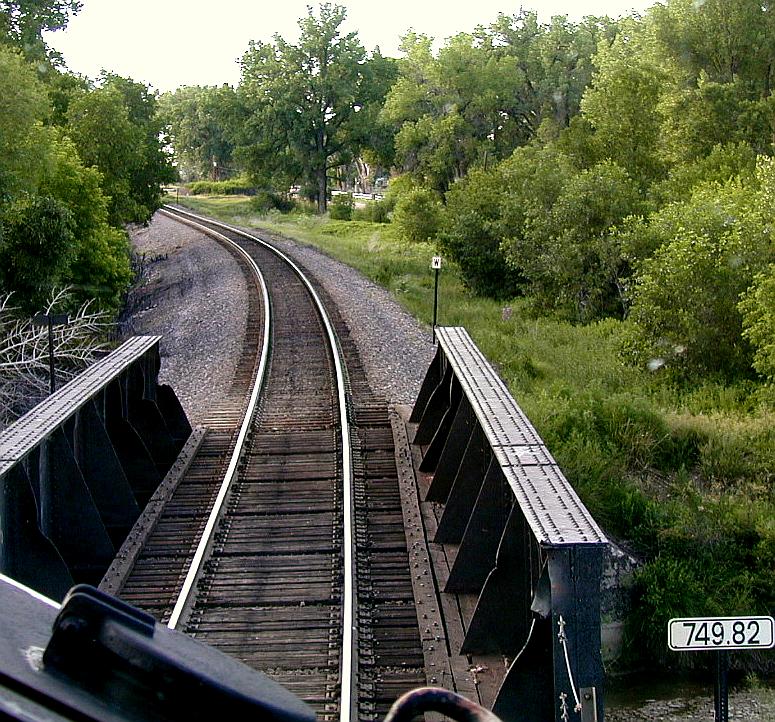
Boeing Bridge The High-Wide instructions (HWI) for some Boeing cars require us to stop our train at bridge 749 and proceed on hand signals. This bridge is about 1/4th mile east of Lodge Grass, Montana. The latest BNSF System General Order of 6/15/01 says that HWI cars must be entrained not less than 6 nor more than 15 cars from the head end. It further describes what is meant by "Stop and proceed on hand signals".We must stop before the train enters the bridge. The conductor must get off and walk back to check that the HWI's have not shifted. He then must get on the rear of the last unit and observe the wide loads on his side of the train as we pull through the bridge at not more than 5 mph. That is apparently so he can stand there and say, "Yep, they hit the bridge" if that should occur. The General Order states that the engineer is to look in his rearview mirror to observe the wide cars passing through the bridge on his side of the train.
Why six cars back?
Previously they were to be immediately behind the power. I can speculate on two possible reasons for the "6 cars back".How do you count "cars"?
- That puts the wide loads back far enough away from the engineer and conductor so that you can see past the first wide car to observe the others?
- In minor slow speed collisions/sideswipes, or upon observing a close clearance as the head end approaches it (such as in yards), you might get stopped before the wide loads get to the collision or close clearance.
Are five-packs one car, three cars (as counted on the wheel report), or five cars? If counted as one car then 5 five-pack cars between the locos and the wide cars is going to put them so far back that you'd need binoculars to observe them. (From the 2nd photo you can see that we decided to count the five-pack as three cars). Are three-pack cars one car or three? Twin-Runner cars? Articulated auto-racks?In the photos below you can see this bridge is on a lefthand curve. The engineer looking in his rearview mirror cannot see around the outside of this curve far enough to see the rear of the SECOND UNIT let alone a few more locos and another 6 cars! The engineer cannot see the train AT ALL let alone see the wide cars. If these cars can go through this bridge unobserved on one side then they can go through with no observation of the conductor's side too. Even the conductor, standing as instructed on the rear of the last unit, cannot see well enough that far away to discern anything about what is going on back there. Even if he were to stay at the bridge itself to observe the cars he can only observe ONE SIDE. Which side does he watch? The inside where the center of the load will be closest to the bridge or the outside where the corners of the wide cars will be closest to the bridge? And it is not just the first wide car we are suppose to observe. It is several of the 11 extreme dimension loads we have on this train.
What about at night?
At night neither of us can see diddly squat back there. If these cars can go through this bridge at night then they can go through in the daytime with no observation too.We had taken 100s, or was it thousands, of these Boeing cars through these bridges AT SIXTY MPH for years and years before suddenly somebody a decade ago decided they won't go through there. Then they put the old BN "Quebec" restriction on them where we had to slow down to 13 mph going through this bridge. When the BNSF was formed the old BN phonetic alphabet restrictions dissappeared and we got the "Stop and proceed on hand signals instructions". Now we have these even goofier current instructions.
Who comes up with this stuff?
Frankly I think they should just say slow down to 10 mph and be done with it. All this hocus-pocus delayed us 21 minutes and protected nothing! This is not a one time thing. We get these cars several times a week.
Astute observers will notice the bridge has been struck and damaged in several places. Well folks this was not a high-wide revenue load that struck it. It was a work train that 25 years ago tried to take a Jordan Spreader, with the wings spread open on it, through the bridge. Ouch!

While we were stopped at the bridge and the conductor was walking back to check if the 737s had shifted I stepped over to his side and snapped this picture. And this is a telephoto shot.
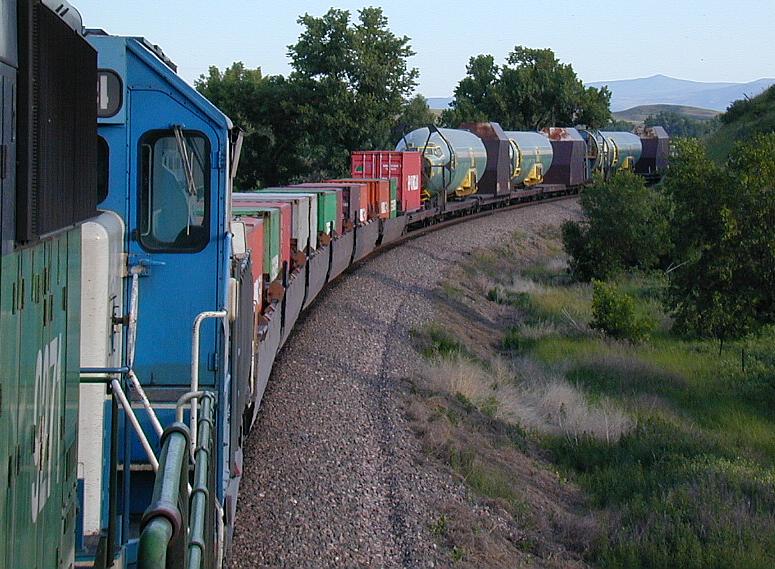
Big Hook Railroad wrecking derricks are hard to find in the 21st century. On June 22, 2001 the MRL had theirs out. It was parked behind the Laurel crew complex for a few minutes before heading west out of town.
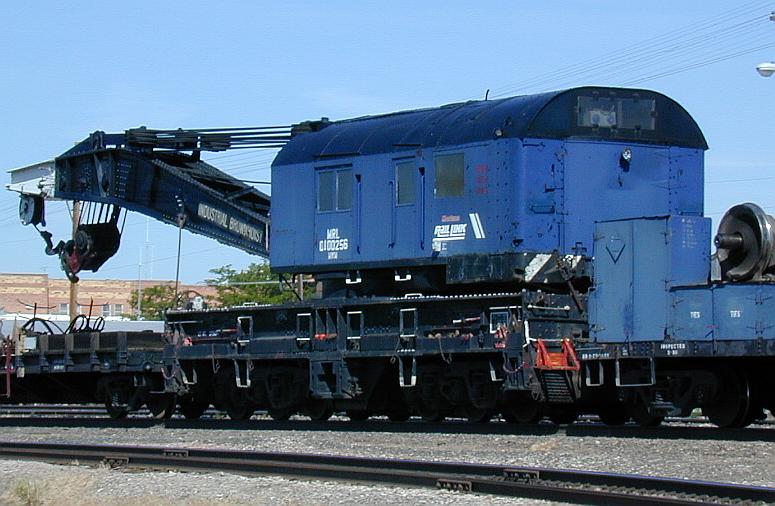
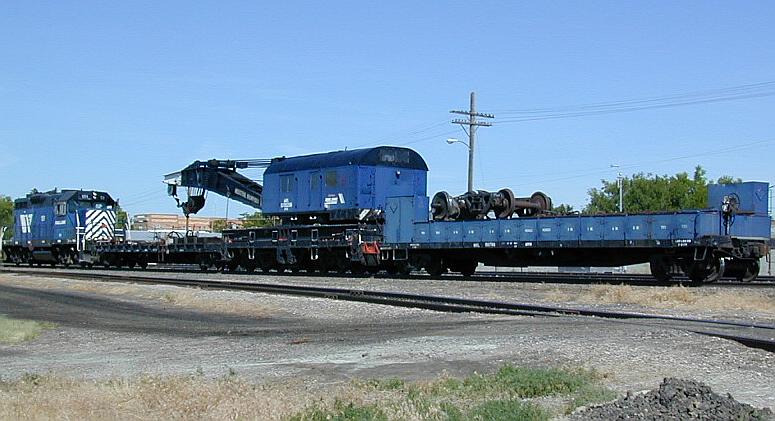
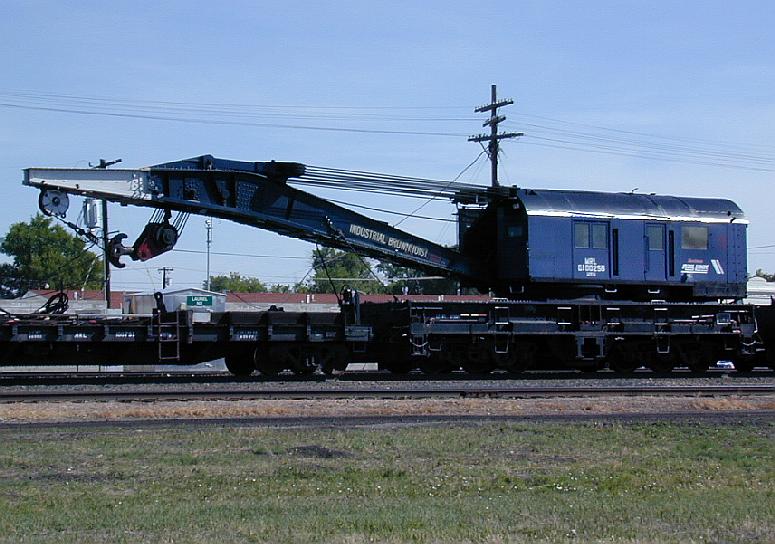



| Return to Tales index | My Home Page | E-Mail me |
Created 06-22-2001
Updated 10-21-2001